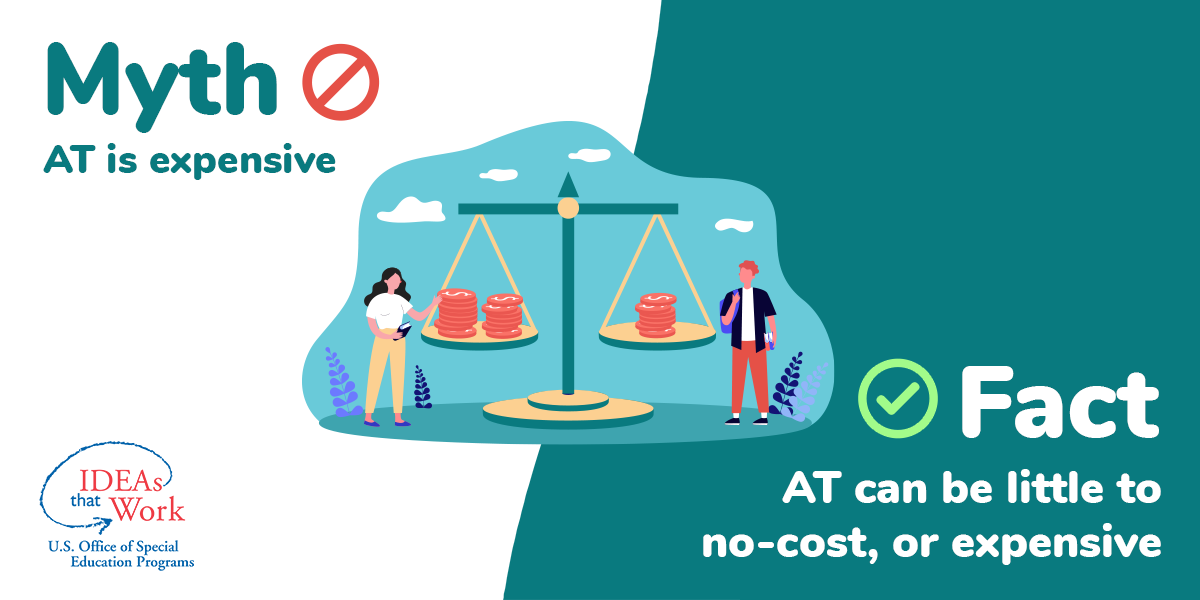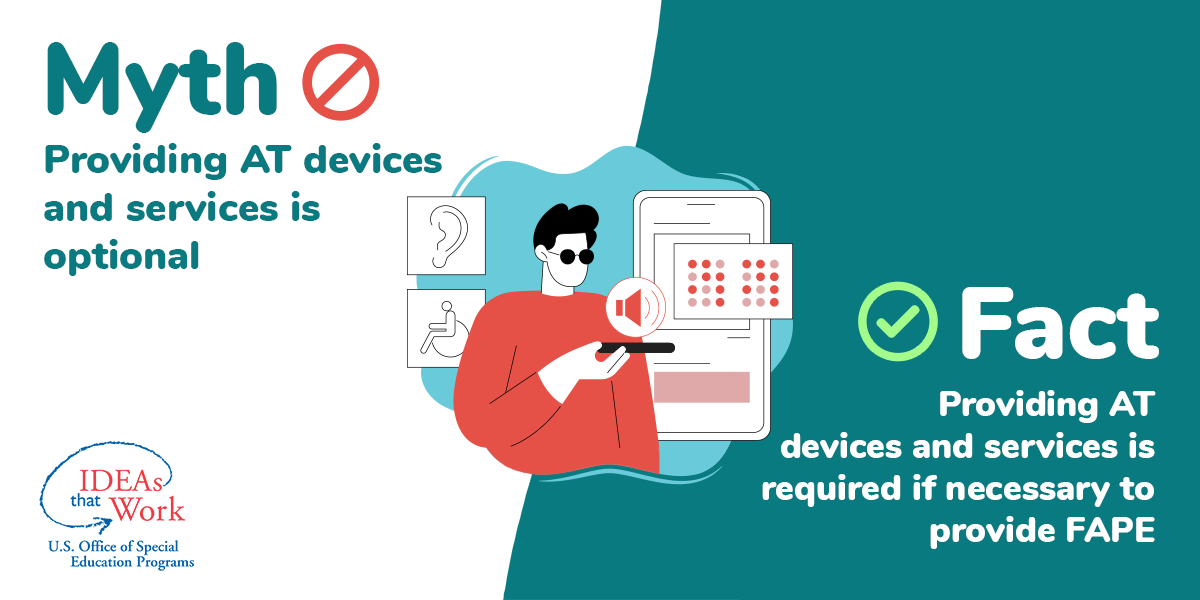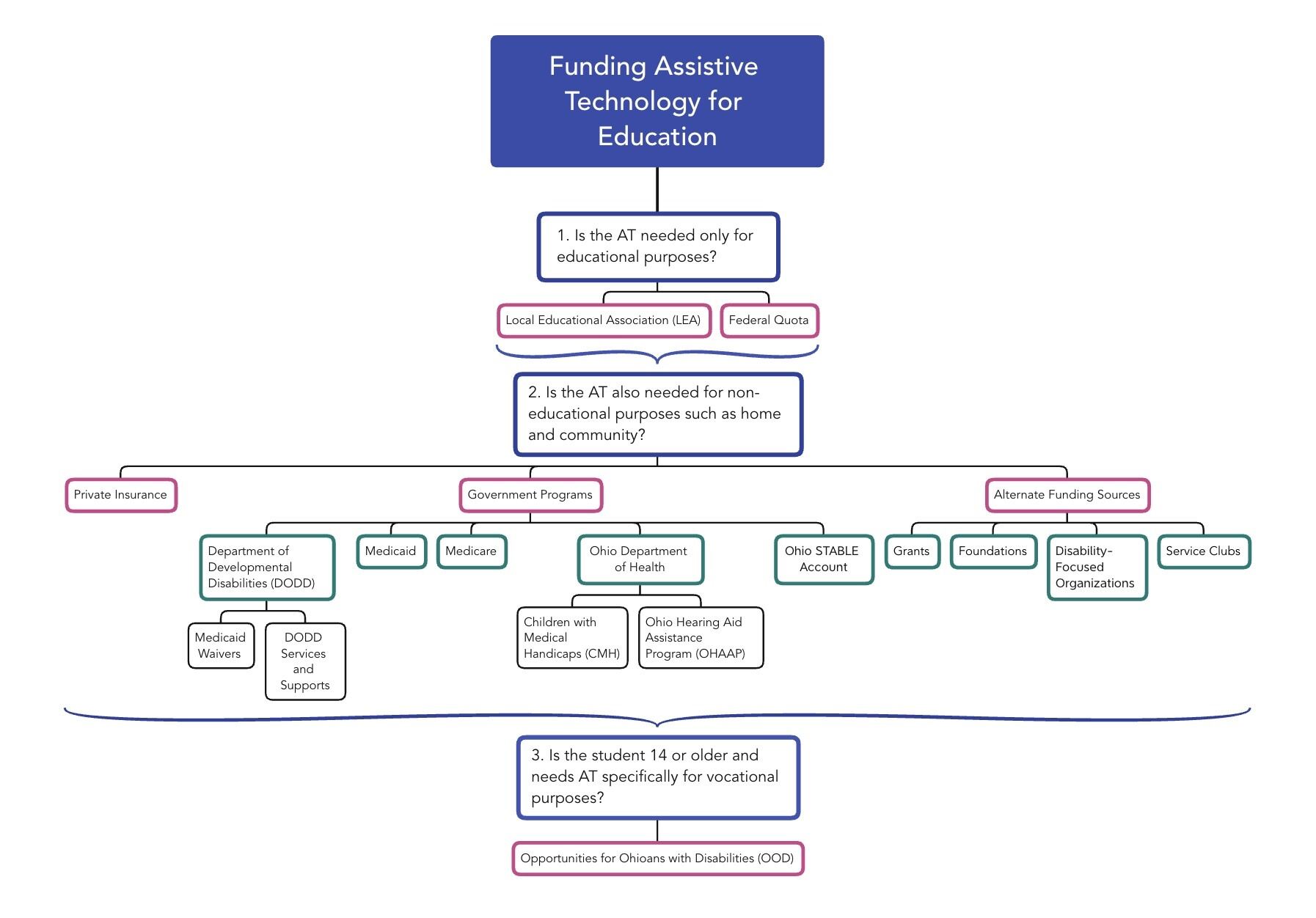Section 4: Funding AT
This section provides information about funding options for assistive technology (AT) devices. It includes basic information about the laws supporting the acquisition of AT by Local Education Associations (LEAs) and will be helpful to both families and educators in Ohio to gain a better understanding about the wide variety of AT funding sources and conditions for use. For more in-depth information on the funding process for AT, please visit the ATIM module Funding Assistive Technology.

AEM Tie-In:
As with AT, some types of accessible formats may be expensive to produce. Examples include embossed braille and tactile graphics. Federal funding offsets the cost for SEAs and LEAs to provide accessible formats of educational materials.
LEA Responsibilities for AT Provision
Under IDEA, AT devices and services must be provided if they are required for the student to receive a Free and Appropriate Public Education (FAPE). The student’s Individualized Education Program (IEP) team makes this determination. It is the responsibility of the LEA to provide AT as identified within the IEP. Ohio Administrative Code indicates that:
- Each school district must ensure that assistive technology devices or assistive technology services, or both, as those terms are defined in rule 3301-51-01 of the Administrative Code, are made available to a child with a disability if required as a part of the child's:
- Special education under rule 3301-51-01 of the Administrative Code;
- Related services under rule 3301-51-01 of the Administrative Code; or
- Supplementary aids and services under rule 3301-51-09 of the Administrative Code.
- On a case-by-case basis, the use of school-purchased assistive technology devices in a child’s home or in other settings is required if the child's IEP team determines that the child needs access to those devices in order to receive FAPE.
(OAC, 2014).
There are many types of funding that LEAs can utilize to obtain the AT. In providing AT, the LEA may purchase it directly, borrow it, rent it, or seek an outside or third-party funding source.

AEM Tie-In:
The SEA or LEA is responsible for providing accessible formats in a timely manner, at no cost to the parent, when the IEP Team determines that a child needs accessible formats of educational materials.
Determining the Appropriate Funding Source
Exploration of AT funding follows the AT assessment process after trials of devices and collection of data through which the team makes a recommendation for a specific AT device. The data from the assessment process—including specific aspects of the student’s needs, environment, tasks, and then equipment trials—can be included in a funding request provided to a specific funding source. For more in-depth information about AT assessment including equipment trials refer to Section 3: The Assistive Technology Assessment Process.
The type or source of funding used to purchase the recommended devices is often related to the intended use of the AT. In other cases, it may also be related to the student’s type of disability. The following questions can help teams determine which funding sources should be pursued:
- Will the AT be used only for educational purposes?
- Does the family wish to also use the AT at home and/or within the community for non-education related activities?
- Is the student 14 years old or older, and will the AT be used to support access to vocational activities?

The funding flowchart organizes a wide range of funding options based on the student and family's needs, including options for LEA funding, funding for home and community use of AT, and funding for vocational purposes. Click here to download the image to view larger.
Funding Assistive Technology for Education. Question 1. Is the AT needed only for educational purposes? Two options: Local Educational Association (LEA) or Federal Quota. Both lead to question two. Is the AT also needed for non-educational purposes such as home and community? Three options: Private Insurance, Government Programs, Alternate Funding Sources. Private Insurance has no sub-categories. Government Programs has five sub-categories: Department of Developmental Disabilities (DODD), Medicaid, Medicare, Ohio Department of Health, Ohio Stable Account. Department of Developmental Disabilities (DODD) leads to Medicaid Waivers and DODD Services and Supports. Medicaid, Medicare, Ohio STABLE Account have no sub-categories. Ohio Department of Health leads to Children with Medical Handicaps (CMH), and Ohio Hearing Aid Assistance Program (OHAAP). Alternate funding sources leads to Grants, Foundations, Disability-Focused Organizations, and Service Clubs, all of which have no sub-categories. Private Insurance, Government Programs, Alternate Funding Sources and their sub-categories all lead to question number three. Is the student 14 or older and needs AT specifically for vocational purposes? One option: Opportunities for Ohioans with Disabilities (OOD). This has no sub-category.
